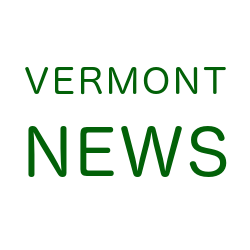Three trailblazing University of Vermont professors were named Fellows of the Ecological Society of America (ESA) today for outstanding contributions to the science of ecology.
UVM’s trio of new ESA Fellows are: Aimée Classen and Taylor Ricketts (Rubenstein School of Environment and Natural Resources), and Nicholas Gotelli (College of Arts and Sciences). All are Fellows of UVM’s Gund Institute for Environment.
UVM had more faculty honored as ESA Fellows today than any other institution. The Catamounts join a distinguished group of 22 new ESA fellows from Columbia University, University of California, and other leading institutions.
“Today’s national recognition of these outstanding University of Vermont professors shows yet again how the environment is a core strength of this great university,” said Patty Prelock, University of Vermont provost. “We couldn’t be more proud of these pioneering teacher-scholars for their contributions to real-world problems in ecology.”
Aimée Classen, Professor, Rubenstein School of Environment and Natural Resources, Gund Institute for Environment
From soil microbes to GHG emissions, Aimée Classen investigates diverse ecosystems (forests, meadows, bogs, tropics, boreal, temperate) to inform predictions of how global change will alter ecosystems. In one project, Classen is measuring global warming’s impacts on mountain landscapes in 10 nations and 5 continents with international collaborators. She recently received a Gund Institute Catalyst Award to develop innovative low-cost, flexible sensors with a CEMS colleague to better study biogeochemical responses to global climate change in extreme environments. Classen is editor-in-chief of the ESA journal Ecological Monographs.
Classen was recognized by the ESA for: “creative leadership and vision for international research collaborations using mountain ecosystems as models for climate change research… and for stellar research contributions to the ecology of global environmental change, including how soil microbial diversity shapes ecosystems, and environmental controls on soil nutrient cycling and carbon storage.”
Nicholas Gotelli, Professor, College of Arts and Sciences, Department of Biology, Gund Institute for Environment
Through his research, Nick Gotelli addresses basic questions about the organization of animal, plant and nutrient communities. What forces determine species composition and abundance? How does competition affect community structure? What factors control population growth and the risk of extinction? His recent research explores the collapse of aquatic food webs, species interactions of ants and their responses to experimental warming, and the measurement, analysis and simulation modeling of species richness, biodiversity, and ecosystem function. Gotelli is the co-creator of EcoSimR, the R modelling software package.
Gotelli was recognized by the ESA for: “contributing outstanding intellectual leadership in ecology and ecological methodology to the fields of biodiversity science, community assembly, climate change, demography, and species distributions, as well as through his service to the ESA.”
Taylor Ricketts, Professor, Rubenstein School for Environment and Natural Resources, Fellow, Gund Institute for Environment
As a teacher and scholar, Taylor Ricketts explores a critical question: How can we meet the needs of people and nature in an increasingly crowded, changing world? He is a pioneer in the field of ecosystem services, which quantifies the benefits that nature provides to people. Consistently among the world’s most cited researchers, Ricketts’ over 130 scientific publications range from investigations of climate impacts on global crop pollination to analyses of the economic and health benefits provided to humans by forests, urban parks, wetlands, reefs, and other natural areas. He has co-authored and co-edited two UN-sponsored efforts to assess global ecosystems and their contributions to human wellbeing.
Ricketts, who leads the Gund Institute for Environment, was recognized by the ESA for: “His contributions to understanding ecosystems and the services they provide for human well-being; his discoveries related to pollination services for crops; and his unique ability to bridge the science and decision-making worlds, ensuring that new knowledge about ecosystems services is used by decision makers in conservation communities and beyond.”
With today’s announcement, UVM and the Gund Institute now have four ESA Fellows. Classen, Gotelli and Ricketts join Nathan Sanders (RSENR), who was named an ESA Fellow in 2018.
The Ecological Society of America was founded in 1915 and is the world’s largest community of professional ecologists.
Learn more about the Gund Institute’s annual fellowships for PhD students and postdoctoral researchers.
Source: UVM News
